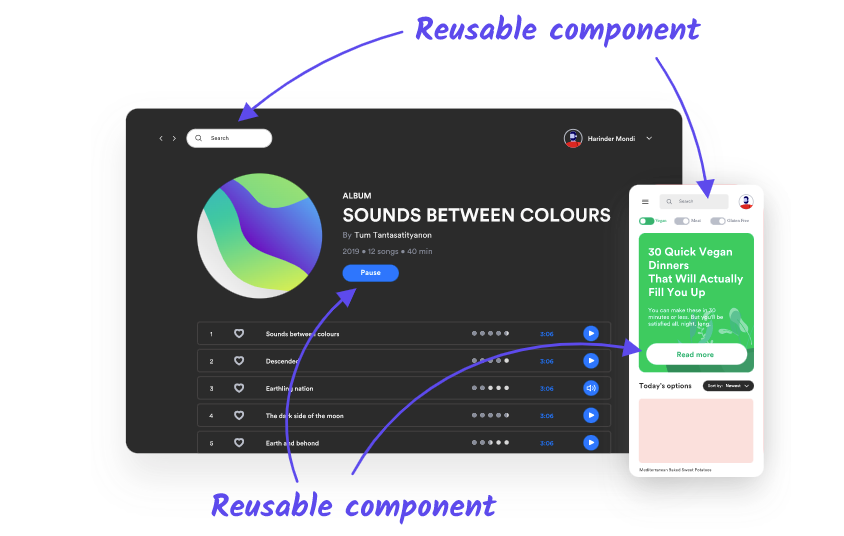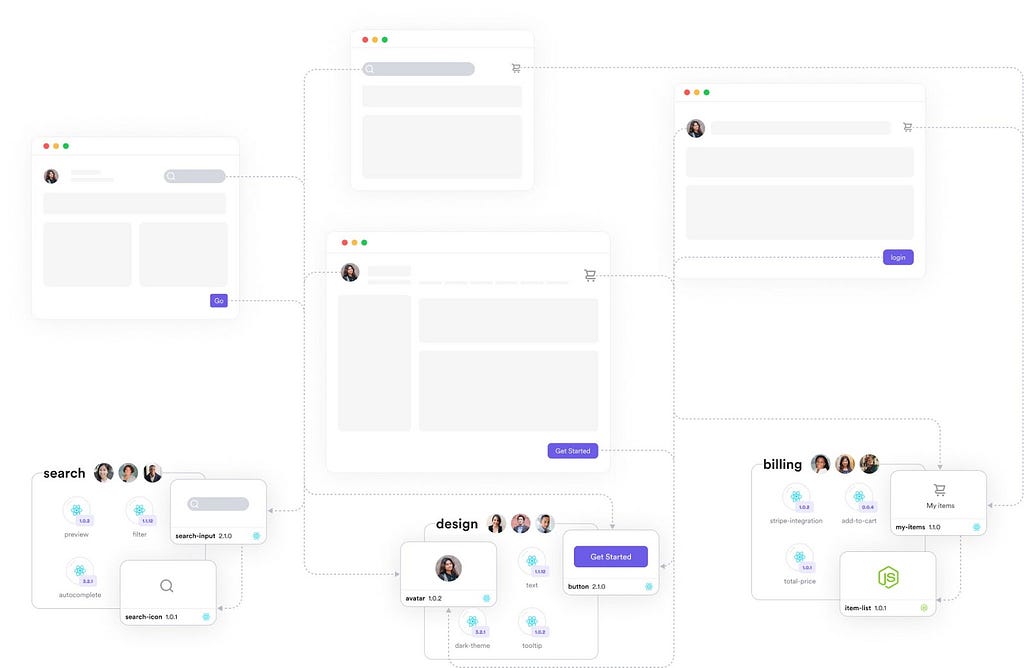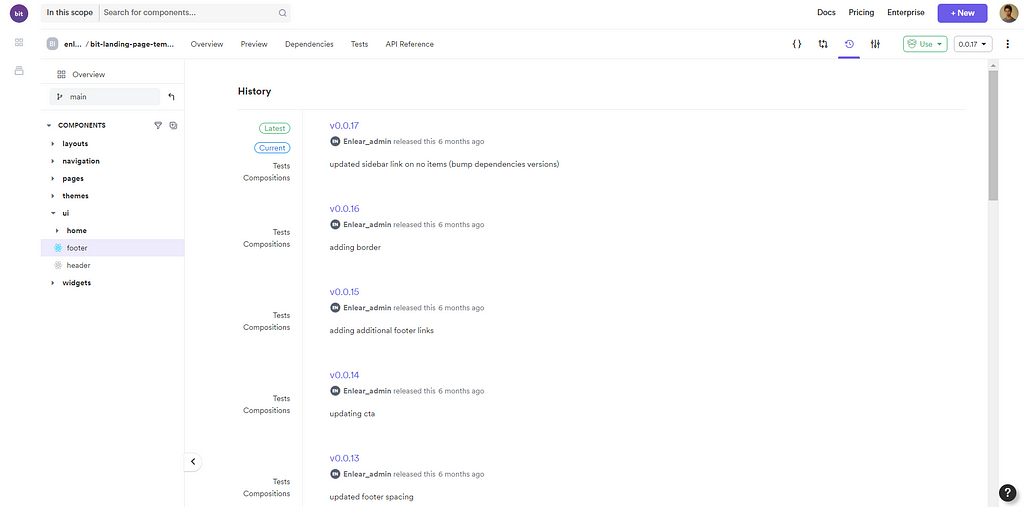This content originally appeared on Bits and Pieces - Medium and was authored by Vidura Senevirathne
Best practices that can help developers create reusable components for enterprise applications.

Reusable components are essential for creating scalable and maintainable applications. Especially when it comes to enterprise applications, we need to make them flexible and adaptable to meet the constantly changing needs of businesses. However, implementing an enterprise application with such requirements can take significant time and effort.
That’s where reusable components come in. Creating reusable components can save developers time and effort by minimizing duplication and simplifying maintenance. However, there are some best practices to remember when developing these components to ensure they are reusable and effective.
So, in this article, I will discuss some of the key best practices that can help developers create high-quality reusable components for enterprise applications.
What’s unique about Enterprise Applications?
Enterprise applications are a game-changer for businesses looking to take their operations to the next level. These applications have the power to revolutionize the way businesses operate by streamlining processes and improving efficiency.
With enterprise applications, businesses can easily digitize their operations. This means businesses can do away with tedious manual processes and instead rely on technology to make their operations more efficient and effective.
However, as businesses grow, the cost of development and operations in enterprise applications can quickly spiral out of control. Hence, businesses often turn to Commercial Off-The-Shelf (COTS) software to minimize costs while leveraging the benefits of enterprise applications.
What is COTS?

COTS refers to pre-existing software purchased or licensed from a third-party vendor instead of building software from scratch. Utilizing COTS software can save businesses time and money that would otherwise be spent on developing custom software.
However, COTS software can’t fully meet a business’s specific needs, and there are instances when developers must customize the application to build the missing features. That’s where reusable components come in.
Reusable components help teams save time and effort by utilizing existing building blocks already developed and tested. Furthermore, using reusable components help to ensure a consistent look and feel across different applications and teams within the enterprise.
You can use tools like Bit to easily build reusable components in an independent environment and compose them into new apps and features. At the same time, organizations can use bit.cloud, to host, share, and collaborate on components. Every new component added to the organization will become a building block for every application allowing everyone to build on each other and stay in sync.


Best Practices for Reusable Components
Now, let’s explore some best practices for using reusable components in enterprise applications.
1. Standardize Naming Convention
Standardizing naming conventions makes it easier for developers to identify and use components across different projects and teams. It helps to avoid confusion and ensure that components are named in a way that accurately reflects their purpose and functionality.
For example, here are some of the actions you can take;
- Use a prefix or suffix such as “btn” for buttons or “form” for form components to indicate the component type.
- Use a naming convention that reflects the component’s purpose, such as “card” for components that display information in a card format.
- Use a consistent casing convention like camelCase or kebab-case across all components.
- Use a naming convention that can be easily translated.
- Maintain documentation on naming conventions for new developers.
2. Keep Components Simple
Components that are overly complex and difficult to understand can be challenging to reuse and maintain in different contexts. They can also lead to confusion and errors, increasing the risk of bugs and technical debt.
To keep components simple, focus on creating components that perform a specific function and can be used in multiple contexts. For example, a date picker component can be used in different forms and applications, making it more versatile and reusable.
Here are some of the steps you can take to build simple components:
- Limit component responsibilities to a single task or function.
- Do not hard code values into components.
- Use clear and concise code to help other developers easily understand the component.
3. Document Components
Documentation is essential to ensure developers can understand and use the component correctly and efficiently.
Documentation should provide information about the component’s purpose, inputs, outputs, and any other relevant information a developer might need. It should be clear and concise and include examples of using the component in different contexts.
Documentation should be kept up-to-date as the component evolves. This ensures that developers have access to accurate and relevant information that reflects the current state of the component.
If you are using Bit to create your components, it will provide separate documentation to maintain usage and the other information related to each component.

4. Test Components Thoroughly
Testing is critical in ensuring that components are working as intended. Thorough testing can help identify potential issues with a component before it is used in production, reducing the risk of bugs. It can also help to ensure that components work together seamlessly and can be reused across different projects and teams.
Here are a few steps to build a solid testing strategy.
- Identify different test types, tools, and frameworks required for the testing process.
- Conduct tests throughout the development process, from the initial design phase to the final implementation.
- Tests should be automated where possible to reduce time and effort.
- Should consider edge cases when designing tests.
- Consider adopting tools like Bit to pre-bake testing into your components.

5. Version Control
Version control is another critical best practice for creating reusable components in enterprise apps. Version control involves keeping track of changes made to a component over time, allowing developers to access previous versions of the component easily if needed.
Git is an example of a version control system that enables developers to track changes made to code and collaborate with other developers. It allows developers to create multiple branches of a component, each with its own changes, and merge them as needed. Bit does the same semantic versioning, and also includes a dependency graph to visualize and track changes.
Learn more here:
The image below shows a Bit component change log with the version number. As you can see, developers can see the changes between each version.

Version control ensures all team members are working on the same component version, reducing the risk of errors and confusion. It can also improve collaboration by allowing multiple developers to simultaneously work on different parts of a component.
Conclusion
Reusable components provide an efficient way to add customized functionality to enterprise COTS systems without starting from scratch. It saves significant time and effort for developers, and there are specialized tools to help them as well.
For example, Bit is a specialized open-source tool for component-driven development. It allows developers to easily build, test and share independent components with different projects and teams.
This article discussed 5 best practices every developer needs to follow when building reusable components for enterprise applications. I hope these suggestions will help you to speed up your enterprise application development process.
Thank you for reading.
Bit’s open-source tool help 250,000+ devs to build apps with components.

Turn any UI, feature, or page into a reusable component — and share it across your applications. It’s easier to collaborate and build faster.
→ Learn more
Split apps into components to make app development easier, and enjoy the best experience for the workflows you want:
→ Monorepo
Learn more:
- Creating a Developer Website with Bit components
- How We Build Micro Frontends
- How we Build a Component Design System
- How to reuse React components across your projects
- 5 Ways to Build a React Monorepo
- How to Create a Composable React App with Bit
- How to Reuse and Share React Components in 2023: A Step-by-Step Guide
Best Practices for Reusable Components in Enterprise Apps was originally published in Bits and Pieces on Medium, where people are continuing the conversation by highlighting and responding to this story.
This content originally appeared on Bits and Pieces - Medium and was authored by Vidura Senevirathne
Vidura Senevirathne | Sciencx (2023-05-16T06:01:59+00:00) Best Practices for Reusable Components in Enterprise Apps. Retrieved from https://www.scien.cx/2023/05/16/best-practices-for-reusable-components-in-enterprise-apps/
Please log in to upload a file.
There are no updates yet.
Click the Upload button above to add an update.
